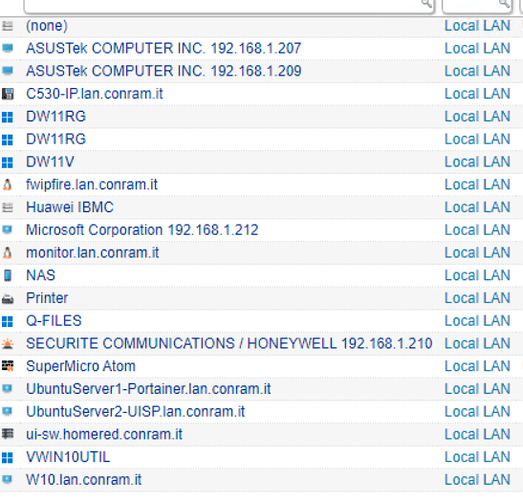yeah, well we have a wazuh thread, no need to post same thing twice… ![]()
You are very right about that. So the approach of just jumping in and hope that the interface is pedagogical enough to lead you to the right settings and a working config is not recommended…? ![]()
Discovery is not working, but I will have to watch and read. At the same time I have a PRTG running and it’s Discovery seems to work out of the box. So does Lansweepers. (Yes, I currently have 4 monitor systems running, Observium, Lansweeper, PRTG and Zabbix. Please don’t hurt me. )
The interface is very functional, but I wouldn’t call it very user friendly. But it gets a little better every release ![]()
Zabbix does nothing automatically “out-of-the-box” (which I liked very much about it after experimenting with several systems back in 2008; systems that claimed to do such things automatically proofed difficult to configure for exceptions and such.)
But Zabbix has 2 kinds of totally different and unrelated discovery mechanisms: So called Low Level Discovery (LLD) and Network Discovery or the slightly misleading name “Auto Discovery”.
Low Level Discovery is a method mainly for discovering a set of metrics on a specific host. For example LLD of all filesystems on a hosts: it will discover the filesystems and create a set of monitoring-items (total space, used space, free inodes, etc..) for each filesystem on that host. This type of discovery is configured on host level or in a host template (with a set of default templates containing LLD rules, included out-of-the-box for different OSes and applications).
LLD can also be used to discover new hosts; for example a LLD rule for a VMware vCenter host can discover all VM’s managed by that vCenter instance and create a host for each one and assign templates for monitoring those individual VM’s.
My IPFire template for example uses LLD to discover installed service addons on IPFire and for discovery of configured OpenVPN clients which will be created as new hosts in Zabbix (containing openvpn statistics for that client).
Network discovery is another mechanism that you can configure by defining a network range to scan and one or more checks to perform on found hosts (this can be checking for specific tcp ports to be open, or specific services listening on specific ports (ssh, http, smtp.. ) etc.. or trying to communicate with a Zabbix or SNMP agent already installed on the host.
Next to such a network discovery rule, you will need to add an action that will actually do something with the discovery result; like adding or removing the found host or adding/removing (a) template(s) to a host based on defined criteria (this port has to be open, that port should talk HTTP, installed Zabbix Agent’s reply for item system.uname should contain string “Linux”, …) .
Be ware: Actions are nothing specific to Discovery. Actions is a separate sort-of module in Zabbix that can do things as a reaction on things that happen in Zabbix, like a trigger (alarm) that goes off, or a host that is discovered, or a host is auto-registered (this is yet another mechanism of auto-discovery: auto-register a host when an Agent seeks contact with the Zabbix server by itself for the first time), etc..
Both discovery roles and actions can be enabled and disabled. So with a discovery rule enabled, but no actions enabled or vice versa, there will be nothing effectively happening.
But out-of-the-box there is only a simple example network discovery rule defined that can discover linux hosts based on installed agents when enabled. The example action that is defined for that example discovery rule, has actually no operations configured, so it does nothing, even when enabled. You will have to add at least a “Add host” operation to the predefined action for it to actually do something like register a found hosts.
Any “smart” discovery will need to be set up by yourself as you know your environment best.
I, myself, never actually used network discovery.
In small environments (like at home) I just manually create the required hosts and assign the required templates to them. In larger environments where there usually is also a CMDB containing all hosts, I use tools like Ansible to install/configure agents on the hosts and then register the hosts/assign templates, through the Zabbix API.
As creation of a host is as simple as just giving it a name, ip or hostname and assign a few templates to it depending on what you want to monitor on said host,
I don’t see the use in the hassle to define and maintain network discovery rules in controlled / self-managed environments. On the other hand, more dynamic environments where you don’t have control over which hosts are added to/removed from it, can greatly benefit from Network Discovery.
Well I do have these on Wifi

and these on Lan
So its borderline adding them manually or via Discovery.
Lansweeper has some werd hickups with snmp groups as well.
Maybe I should stick with it, they are improving a lot of network features …
Just a little hint, if you’re interested:
LibreNMS is a community-based fork of the last GPL-licensed version of Observium.
Regards
has phoneapps, that’s a plus… it would indicate it can actually discover smartphones and tablets as such
